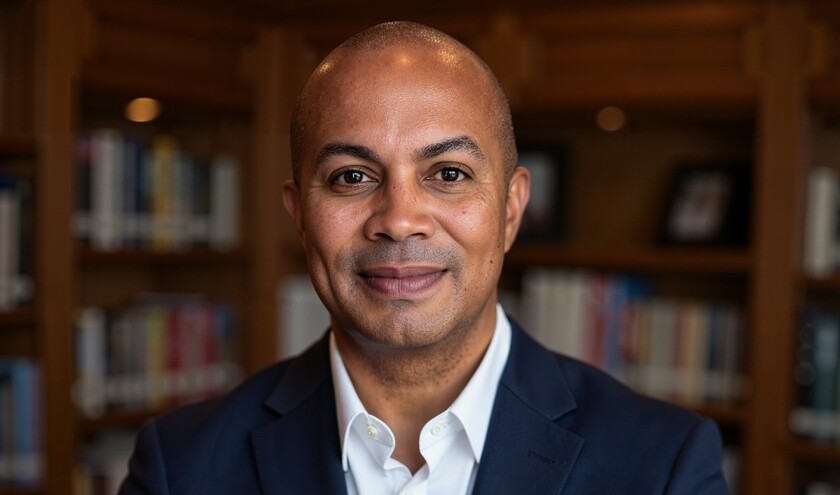When Richard Stubbs stepped down this month as chair of the Health Innovation Network (HIN), it marked the end of a pivotal two-year period for the organisation — one that saw innovation placed at the heart of the NHS's long-term vision. Now returning full-time to his role as chief executive of Health Innovation Yorkshire and Humber, Stubbs reflects on how innovation, place and partnership can combine to secure the NHS's future.
Anchoring innovation in national strategy
Beginning in October 2023, Stubbs' tenure as HIN chair coincided with a defining moment for the health service. ‘You definitely knew there was going to be a General Election and you probably sensed there'd be a new Government and a new plan,' he reflects. ‘Leading the Health Innovation Network's positioning about the importance of innovation was probably my biggest job as chair.'
That positioning has clearly paid off. Innovation features prominently across both the 10-Year Health Plan and the Life Sciences Sector Plan, documents Stubbs describes as ‘two sides of the same coin'. He points to their twin focus on digital foundations, data infrastructure and AI as critical building blocks for transformation.
‘The NHS needs to lean heavily into digital and data if we're going to realise the potential of innovation,' he says. ‘The focus on AI, on the single patient record — these are absolutely key if we're going to support the workforce and drive economic growth.'
Stubbs was directly involved in shaping that policy. As a member of the Research, Innovation and Life Sciences working group for the 10-Year Health Plan — chaired by Lord Darzi and Dr Vin Diwakar — he played a role in ensuring innovation was embedded in the plan's DNA. ‘There was a huge read-across between the ambitions within the 10-Year Health Plan and the Life Sciences Sector Plan,' he explains. ‘That alignment is really important for creating a coherent system of innovation.'
Innovation as necessity, not luxury
With NHS finances under intense strain, Stubbs is candid about why innovation must now be treated as essential rather than optional. ‘Managing the decline isn't an option,' he says. ‘We have a tired workforce, patient satisfaction going in the wrong direction and we're not expecting a huge injection of cash from the Treasury. The only way through is to do things differently — and that's where innovation comes in.'
For Stubbs, that doesn't mean technology for its own sake. His focus is on pathway transformation rather than product adoption — redesigning how care is delivered, not just digitising existing models. ‘We've learned that you can't just put a product into a pathway and expect change,' he says. ‘You have to think about the pathway as a whole. Innovation is at its most powerful when it transforms the system, not when it's bolted on.'
The rise of place-led healthcare
If there's a single theme that defines Stubbs' leadership, it's his conviction that health innovation must be place-led. The logic is simple: most of the determinants of health lie outside the NHS, so the solutions must extend beyond it too, he argues.
‘As place-based leaders, we can't expect the NHS to be everything to all people,' he argues. ‘Health happens in schools, workplaces and communities. That means every part of our local ecosystem — mayors, employers, local authorities, the voluntary sector — needs to play a leadership role in improving health.'
Stubbs sees the devolution agenda as a major opportunity. ‘In Yorkshire we've got full devolution to mayoral combined authorities,' he says. ‘I talk to our mayors as much as I talk to our ICBs. They have levers around jobs, housing, transport — all crucial to health outcomes. Their ambitions are the same as ours: healthier local populations. So, innovation has to be place-based, not just NHS-based.'
Innovation beyond the NHS
Stubbs also believes the next wave of transformation will take place outside the traditional boundaries of the health service. He points to developments such as the explosion of consumer diagnostics, digital health tools and employer-led wellbeing initiatives.
‘There's now a new ecosystem of data, innovation and health delivery,' he says. ‘We need to think hard about how the NHS engages with that — whether it's privately purchased GLP-1 drugs, wearable diagnostics, or school-based health interventions. Are we going to sit back and watch that happen in parallel, or are we going to lean in and make it part of the wider health system?'
He envisions a future where the NHS acts as a trusted benchmark, providing assurance and quality standards rather than delivering everything directly. ‘I can see a day when people are able to purchase health tools or diagnostics knowing they're "NHS approved" — even if they're not NHS delivered,' he says.
Data, AI and the balance of risk
Stubbs' optimism about AI is tempered by pragmatism. As a member of the National Commission into the Regulation of AI in Healthcare, he is deeply engaged in the conversation about risk and regulation. ‘The UK needs to move quickly to put in place the right regulatory framework,' he warns. ‘Safety is paramount, but we also need a nimble approach if we're going to keep pace with the technology.'
He sees the early impact of AI not in clinical care, but in non-clinical applications — tackling inefficiencies, improving patient experience and prioritising access. ‘We're already seeing AI tools like Pinpoint Data Science being used to stratify cancer patients on the waiting list, ensuring those who need care most urgently get it first. That's the kind of quiet AI revolution that could transform the NHS.'
Addressing inequality through innovation
While innovation can widen health inequalities as the general public is able to pay for solutions privately which cannot be available to everyone on the NHS, such as weight loss drugs for example, Stubbs argues it can also reduce inequalities if used correctly. ‘We need to avoid a single "front door" to healthcare,' he cautions. ‘Not everyone wants or can use digital tools. We need multiple doors — apps for those who prefer them, phones for others, face-to-face for those who need it.'
But he also points to examples where innovation is closing gaps. ‘We're now seeing home kidney screening kits posted through doors, replacing the need for long travel to clinics,' he says. ‘That's increasing uptake among communities who were previously underrepresented. Sometimes innovation opens doors that were never there before.'
From innovation to neighbourhood health
Looking ahead, Stubbs is enthusiastic about the Government's emerging neighbourhood health agenda — if it reaches beyond primary care. ‘I hope it's not just about GP access, but about social assets and community capacity,' he says. ‘There are so many smart innovations that can help neighbours take care of each other — devices that alert carers if someone's kettle hasn't been switched on, or community health apps that build local resilience.'
He cites Hero of Health, an AI-powered neighbourhood app piloted in Yorkshire, as a powerful example. ‘It's a kind of Facebook for health,' he says. ‘It connects people to local resources, walking groups, cooking classes. We've seen a 78% improvement in anxiety and depression scores, a 30% reduction in falls risk and a 44% reduction in GP presentations. Sometimes, simple innovations have the biggest impact.'
Lessons from leadership
After two years as chair, Stubbs distils his learning into three insights. First, that everything connects — innovation, workforce, policy and funding must align. Second, that data is the foundation of modern healthcare. ‘If we don't treat data as the building block of everything we do, we won't realise any of our ambitions,' he says. And third, that true innovation is about pathways, not products.
‘You can't just digitise existing care models and call it transformation,' he says. ‘You have to start from what "beyond good" looks like for patients and design from there.'
The next chapter
Returning to Yorkshire full-time, Stubbs is focused on turning those principles into practice. ‘If we're really going to make the prevention shift happen, it can't just be the NHS,' he says. ‘It's got to be the whole ecosystem — mayors, schools, employers, communities — all playing their part. That's how we create a healthier future.'



